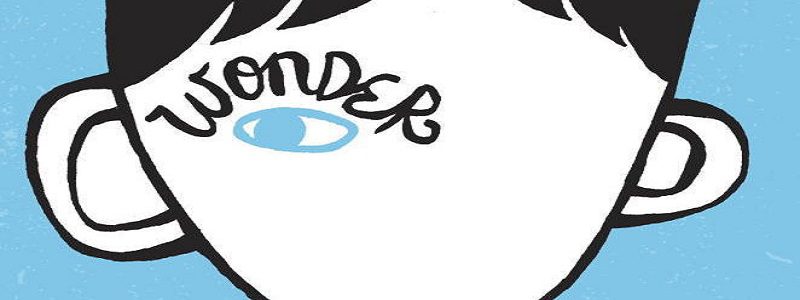
‘Wonder’ and Evidence Finding
One of our partner middle schools is doing a unit on R. J. Palacio’s 2012 young adult novel, Wonder, winner of multiple accolades, including the 2015 Mark Twain Reader’s Award. We designed an argument-centered culminating project around the Evidence Finder Activity.

The activity begins by reviewing for students the fundamental academic process of interpretation and producing interpretive arguments when reading stories, poems, novels, and plays.
When we read literature – stories, novels, plays, poems – in school we try to figure out what we are reading means. We try to figure out what the story or book is trying to tell us. Stories have always functioned in civilization as a means of communicating ideas, lessons, and insights, often times especially about life and how we should live our lives. This work to make meaning out of literature is called interpretation. We interpret literature by making what are called claims about what it means. We back up those claims with evidence from the text that we think supports our claims. These evidence-backed claims are called interpretive arguments. Interpretive arguments are often made in response to questions that the work of literature explores. These questions are called debatable issues.
Students are then introduced (or re-introduced) to the debatable issue at the center of their study of Wonder:
Does main character Auggie Pullman end up in Wonder a fully accepted member of his school and community, despite his physical deformity?
Wonder is an uplifting, upbeat story of 12 year old Auggie’s struggles with mockery and ostracization at his new school due to his severe medical facial deformity. But the story has nuances and, despite its commitment to hopefulness and a positive tone, leaves open the question as to how fully Auggie’s acceptance by his peers and the larger society truly is.
The Evidence Finder Activity has students work in groups of three, finding evidence from the text on a series of argumentative claims that divide equally on both sides of the issue. Several examples of those claims are:
Several classmates, such as Summer Dawson, go out of their way to befriend Auggie.
The Pullman family gives Auggie a great deal of love, but they cannot change his appearance.
“The Plague” and “the War” demonstrate not only that kids in middle school can be mean to kids with deformities but that peer pressure and cliques feed that unfairness.
Even Auggie’s sister Via is embarrassed of her brother when she enters high school and her social surroundings begin to change.
Scaffolding for the middle school students includes providing them with page numbers in the novel from which they can find evidence to support each interpretive claim, and providing them with the claims themselves, which will help them assimilate models of claim formulation for argument-centered projects later in the year.
After the groups have had a chance to complete the organizers and build arguments on both sides of the issue, they undertake internal group discussion about which arguments they think are strongest and which position on the interpretive question they support. The groups are made up of three students so that they can, if need be, come to a 2 – 1 majority to settle on their position. Finally, the instructor has groups share out which position they support, on the basis of which arguments, and how they would respond to the arguments supporting the side contrary to their own.
Argument-centered interpretation activities like the Evidence Finder in Wondercan help make English language arts classrooms in middle schools more text-focused, more analytically rigorous, and more college-directed — while not sacrificing any of the personal wonder and fascination young kids feel in the face of great literature like R. J. Palacio’s inspiring work.

